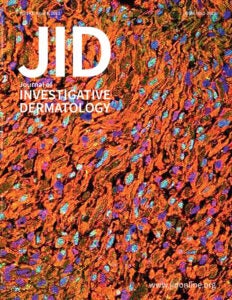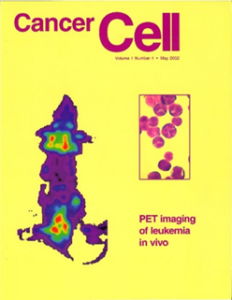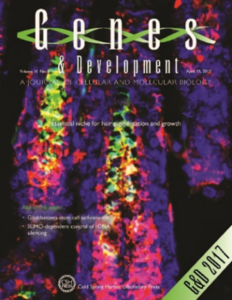Lab Members
Meet the PI
Dr. Le received his Ph.D. degree in Immunology and Molecular Genetics, and a medical degree (M.D.) from the Medical Scientist Training Program at the University of California, Los Angeles (UCLA). He completed an Internship in Internal Medicine at UCLA/St. Mary Medical Center, residency training in Dermatology and a postdoctoral fellowship in Cancer Biology from University of Texas Southwestern Medical Center. He is board certified by the American Board of Dermatology. Dr. Le sees patients in the Dermatology clinic and conducts translational research at the UVA School of Medicine where he is Chair of the Department of Dermatology.
Dr. Le’s scientific contributions began at UCLA, where he initiated his Ph.D. thesis project in the laboratory of Professor Owen Witte to investigate the molecular and cellular functions of a lymphocyte-expressed G protein-coupled receptor and its role in BCR-ABL mediated leukemogenesis. His thesis work established this receptor as a regulator of lymphocyte proliferation, autoimmunity and inflammation, thus demonstrating how this moiety contributes to immunological tolerance, autoimmunity, and neoplastic responses in lymphocytes [Cancer Cell 1(4): 381-391; Immunity 14(5), 561-571; Proc. Natl. Acad. Sci. USA 97, 12109 – 12114].
leukemogenesis. His thesis work established this receptor as a regulator of lymphocyte proliferation, autoimmunity and inflammation, thus demonstrating how this moiety contributes to immunological tolerance, autoimmunity, and neoplastic responses in lymphocytes [Cancer Cell 1(4): 381-391; Immunity 14(5), 561-571; Proc. Natl. Acad. Sci. USA 97, 12109 – 12114].

It was while working on BCR-ABL and chronic myelogenous leukemia, that Dr. Le developed an interest in tumor micro-environment and tumor cell of origin. As a natural extension of his doctoral work, Dr. Le was obsessed with tackling two fundamental questions in cancer biology: how does a permissive tumor microenvironment, such as inflammation or haploinsufficiency, regulate tumorigenesis in a non-cell autonomous fashion? His second interest lies in the understanding of how cancers originate and develop from adult stem cells in a certain organ of the body. His postdoctoral work in the laboratory of Professor Luis Parada defined the cell of origin for Neurofibromatosis Type I (NF1)-associated cutaneous neurofibromas and generated a novel mouse model for this complex tumor. It also provided strong evidence that loss of NF1 is required but not sufficient to induce neurofibroma, pointing to the essential role for the tumor microenvironment, including neurons, fibroblasts, immune cells, and hormones in neurofibroma development. Additionally, while focused on neurofibroma, this work raises the exciting possibility that the surrounding non-neoplastic cells in the tumor environment may also impact the growth of other tumor types. An increased understanding of the role of non-neoplastic tumor-associated cells may lead to new directions for cancer therapy and prevention [Cell Stem Cell 4 (5): 453-463; Cancer Research 71(13): 4686-95; Oncogene 26(32): 4609-4616].
role for the tumor microenvironment, including neurons, fibroblasts, immune cells, and hormones in neurofibroma development. Additionally, while focused on neurofibroma, this work raises the exciting possibility that the surrounding non-neoplastic cells in the tumor environment may also impact the growth of other tumor types. An increased understanding of the role of non-neoplastic tumor-associated cells may lead to new directions for cancer therapy and prevention [Cell Stem Cell 4 (5): 453-463; Cancer Research 71(13): 4686-95; Oncogene 26(32): 4609-4616].
 The contributions described above provide the groundwork for current work in his laboratory – investigations aimed at defining how early, initiating genetic events in the tumor cells of origin interplay with microenvironmental factors to regulate tumorigenesis. His laboratory utilizes NF1, a common tumor predisposition human genetic disorder, as a model to address these fundamental questions of cancer biology. His laboratory has recapitulated human neurofibromatosis in murine
The contributions described above provide the groundwork for current work in his laboratory – investigations aimed at defining how early, initiating genetic events in the tumor cells of origin interplay with microenvironmental factors to regulate tumorigenesis. His laboratory utilizes NF1, a common tumor predisposition human genetic disorder, as a model to address these fundamental questions of cancer biology. His laboratory has recapitulated human neurofibromatosis in murine models to decipher mechanisms that initiate Schwann cell tumor formation and drive their malignant transformation. These studies published from his laboratory addressed fundamental, unanswered questions in the neurofibromatosis field [JCI 131(1):139807; JCI Insight 5(20):e141514; Cancer Discovery 9(1):114-129; Nature Communications 9:5014; Journal of Clinical Invest 128(7):2848-2861; Cancer Cell 26(5): 695-706; Cell Reports 6(1): 81-92; Cancer Research 74(2): 586-97; Cell. 152(5): 1077-1090; Stem Cells 30(10): 2261-70].
models to decipher mechanisms that initiate Schwann cell tumor formation and drive their malignant transformation. These studies published from his laboratory addressed fundamental, unanswered questions in the neurofibromatosis field [JCI 131(1):139807; JCI Insight 5(20):e141514; Cancer Discovery 9(1):114-129; Nature Communications 9:5014; Journal of Clinical Invest 128(7):2848-2861; Cancer Cell 26(5): 695-706; Cell Reports 6(1): 81-92; Cancer Research 74(2): 586-97; Cell. 152(5): 1077-1090; Stem Cells 30(10): 2261-70].
 While working on neurofibromatosis, his research group serendipitously uncovered the identity of follicular epithelial cells that directly give rise to hair and mechanisms that cause hair to turn gray [Genes & Development 31(8): 744-756] – findings that could one day help identify possible treatments for balding and hair graying.
While working on neurofibromatosis, his research group serendipitously uncovered the identity of follicular epithelial cells that directly give rise to hair and mechanisms that cause hair to turn gray [Genes & Development 31(8): 744-756] – findings that could one day help identify possible treatments for balding and hair graying.

